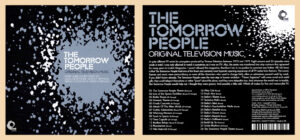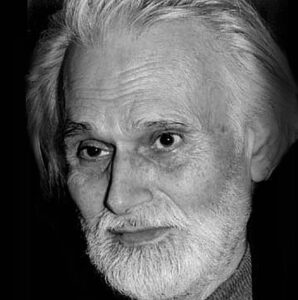Edouard Michael (1921-2006)
Edward Salim Michael was born in Manchester in 1921 and grew up in the Middle East. As a British citizen during the Second World War, he enrolled into the RAF as a Ground Airman despite not being able to read or write. He was taught by his camp’s Anglican Chaplin whose wife noticed the then 19 year old’s ability to memorise music. She began to tutor him in the mechanics of music composition.
A mere two years later, his first orchestral work, a scherzo for orchestra won a competition in London. It was performed at the Royal Albert Hall by the London Philharmonic Orchestra.
Following the war, he continued to study music in Britain and ended up as a professional violinist. He composed around 35 concertos, 50 sonatas and over 200 other works before he moved to Paris to continue his studies.
It was in Paris that he became a Buddhist having had a revelatory experience in the presense of a statue of Buddha. Inspired, he travelled to India and continued to practice meditation.
His music had become more abstract and tonal and he began to find it more difficult to get it performed. When he returned to France in 1974, he taught Yoga but found that his spiritual teachings became more dominant in his life. As a result, he wrote his first book The Way of Inner Vigilance which was published in English in 1983.
He published a further seven books before he died in 2006.
The Theme Music
There are several things that people always recall of Timeslip but none evoke the memories of scary cliffhangers and dramatic revelations more than the series’ distinctive theme music.
And it often comes as a surprise when they realise that it is little more than a piece of library music and wasn’t composed especially for the series.
From the evidence of the television episodes, there appears to be two distinctive versions of the theme music used over the opening and closing credits. Both suggest different arrangements of the same piece.
One is a slow menacing build up that is sometimes used on the opening titles. The other is a more strident imposing version which builds to a dramatic climax and is the one generally chosen for the end credits.
The two pieces are in fact both taken from a single track. It is called La Rite de Terre (The Rite of Earth or Earth Rite) and is actually one of four rites composed by Edouard Michael.
La Rite de Terre can be listened to here.
Other Music From Timeslip
On the whole the series did not use much in the way of incidental music. When on the very rare occasions that it did, more library music was employed.
For The Time of the Ice Box, tracks from an album of synthesised music issued by Standard Music Library were employed.
In Part one, two tracks were utilised to provide further atmosphere for the snowy wastes of the Antarctic. These were Lure of the Space Goddess by Russe/St.George and Whirring Menace by St. George. Another track, the industrial sounding percussive piece, Battle Theme by Russe, is used in the final episode over shots of the Ice Box freezing over. This last track is familiar to Doctor Who fans since it was also used that same year in the adventure entitled Inferno (which coincidentally also featured Timeslip’s Ian Fairbairn).
All three tracks appeared on the library music album Electronic Music (Standard Music Library: ESL 104) originally released in 1969. The album was also used by the production team of The Tomorrow People from 1973 onward s and in 2006, Trunk Records released it on CD as The Tomorrow People: Original Television Music (JBH017LP) with the addition of Dudley Simpson’s theme music. The CD is currently deleted but second hand copies can be found via the usual places including Amazon.
s and in 2006, Trunk Records released it on CD as The Tomorrow People: Original Television Music (JBH017LP) with the addition of Dudley Simpson’s theme music. The CD is currently deleted but second hand copies can be found via the usual places including Amazon.
As a note of interest, the credited composers of the pieces, Russe and St. George, are actually pseudonyms for Delia Derbyshire and Brian Hodgson respecitively. Delia is the invidual credited with creating the distinctive sound of the Doctor Who theme music whilst Brian used his house key on an old piano wire to create the unearthly sound of the Doctor’s TARDIS as it travels through time.
There’s also a more conventional piece of ‘chase’ music used heavily in the latter half of Part seven of The Year of the Burn Up where the refugees from Beth’s community are being chased across the waste-land by Traynor and the Alpha clones; as well as a number of single-note ‘stings’ used in Day of the Clone; notably when our heroes are shocked at their sudden sight of the mannequin figures at R1.
Andrew-Mark Thompson
(with thanks to Mark Ayres)

